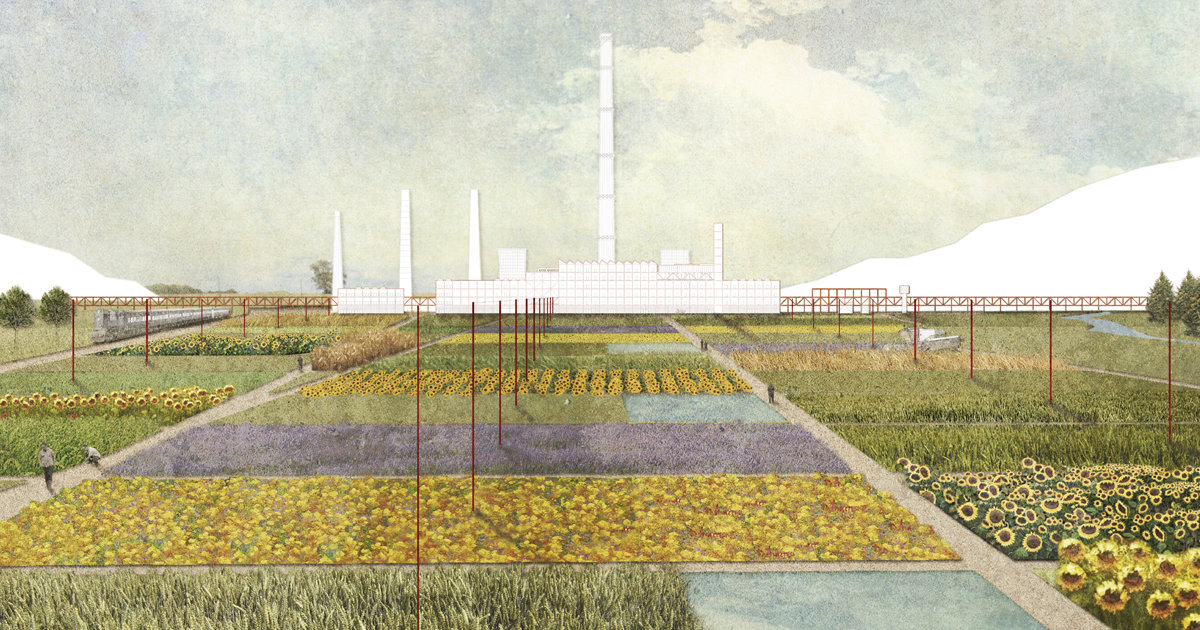
Considered as one of the most polluted places in Europe, Copsa Mica, a Transylvanian village of 5,000 inhabitants, has suffered from heavy industrialization during Romania’s communist period. Metallurgical smoke caused a severe contamination of soil and waterways through decades. Although located in one of the most dynamic regions of Romania, the village is isolated from any investment process due to its environmental disaster.
The project attempts to change this situation following a long-term strategy consisting in a regeneration process of the site’s polluted ground, leading to a gradual re-industrialization. Phytoremediation - soil remediation using hyper-accumulating plants able to absorb heavy metals - is used for these.
Organized on a modular frame, phytoremediation fields generate plots that could be appropriated for future activities once the soil is cleaned (agriculture, industry...). It needs an incineration factory to burn the successive harvests in order to collect and recycle heavy metals contained in the ground. But such a factory is an investment that needs to be durable. In order to achieve this goal, the solution came to combine the harvest’s incineration with household waste incineration on a regional scale. This will contribute to meet the EU targets of 50% HW recycling per year that Romania must reach by 2025, and allows the production of green energy, like heating, electricity and biogas, offering economical outputs for the population of Copsa Mica.